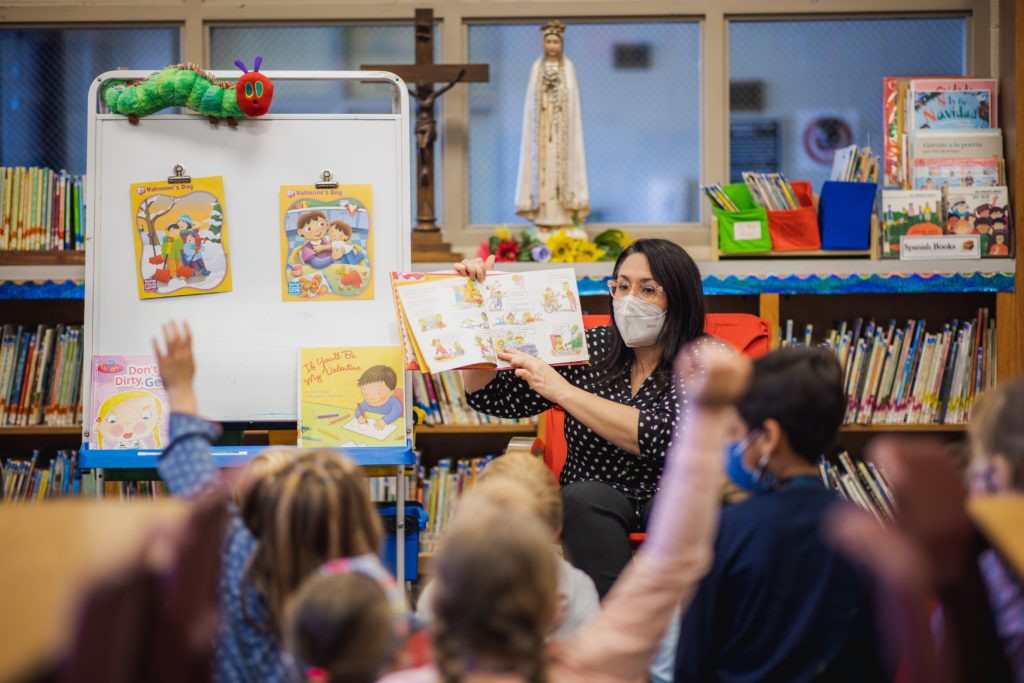The National Catholic Educational Association says Catholic schools have recovered more quickly from the pandemic than its public school counterparts.
The successes, according to the NCEA, go across the board when looking separately at Black students, Hispanic students, students from low-income households, and students who qualify for free and reduced-price meals.
The scores were first reported in October by the National Assessment of Educational Progress, colloquially known as "The Nation's Report Card." The numbers tracked the progress, or lack thereof, in math and reading by both fourth graders and eighth graders.
While Catholic schools' scores are generally better than those of their public school counterparts -- Annie Smith, NCEA vice president of data and research, said eighth graders pre-COVID-19 were about 5% better in math and 6% better in reading -- the new numbers, based on testing conducted in 2021, showed a wider separation between the two.
Catholic schools' scores have pretty much bounced back to the levels they had achieved prior to the coronavirus pandemic's onset in March 2020. The only area that is still not up to snuff is eighth-grade math, which is still five points behind pre-pandemic levels.
Even so, said NCEA president Lincoln Snyder, those numbers are 15 points ahead of the comparable figures reported by public schools.
"It wasn't a surprise to me at all," Snyder told Catholic News Service in an Oct. 28 phone interview. "We've been monitoring testing data, really, throughout COVID."
The NAEP numbers, Snyder said, bear out what a private firm found in 2021 when it conducted a lateral study of 3 million U.S. students to assess learning loss.
Given the upheaval wrought by the pandemic within society in general, and education in particular, Snyder said, "you would expect all students to have some learning loss." But it was the ability to bounce back that characterized much of Catholic education, he added.
"It's a testament to our educators to meet in person as soon as possible," Snyder said. "It greatly did improve our Catholic school outcomes."
The NAEP numbers dovetail with the NCEA's own census showing that, for the first time in 20 years, enrollment in Catholic schools across the United States increased by 62,000. The number of Catholic schools also stayed steady, as 50 new schools were created to offset the closing of 50 other schools.
"We did have a big uptick in enrollment. We had an initial drop. In March of '20, when we went to distance learning, people were fearful for losing their jobs. Or they did lose their jobs, but they quickly recovered. "
"Our retention of those new families was very high," Snyder told CNS, citing a rate of 90% percent and "some dioceses were really as high as 98%."
"They fell in love with the school, but they also stayed because of the community. This is a real opportunity for us to shine," he said.
Only about one-third of dioceses had reported enrollment numbers for the current school year to the NCEA. A final tally is not expected until the spring.
Smith told CNS in a Nov. 1 phone interview that for Catholic schools to get back to their 2019 achievement levels, "our teachers are doing what they need to do already. They're in the classroom, they're working with students, they're creating individualized learning plans."
She confessed to being "a little disappointed with the drop in the eighth-grade math" scores, but "they're going to graduate into our high schools, so we're going to make sure this doesn't have a long-term impact."
Snyder said the NCEA has to "do a good job of telling our story."
"I think we have a very compelling story to tell," he explained. "We educate the whole children. We teach them to be servant leaders in Christ. Our teachers really model that servant leadership. I think they were committed to an adult that was committed to them. They can see that commitment and they responded to it."

